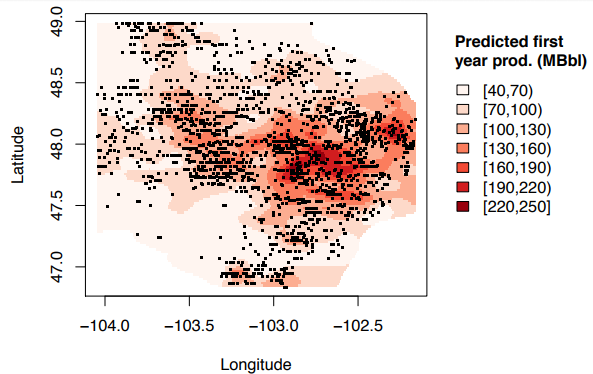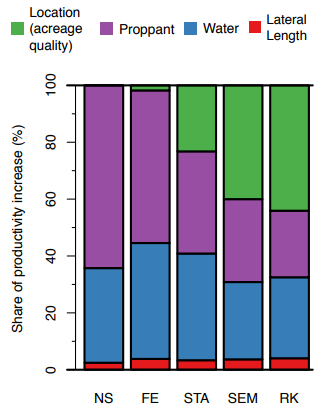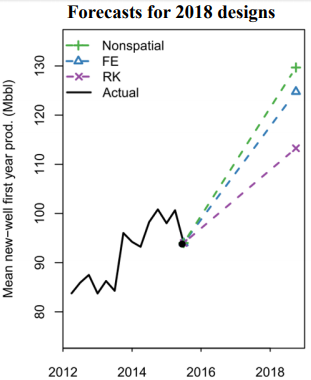New wells typically focus on the best locations
Much has been made of productivity gains in oil and gas operations since the oil price downturn in 2014.
Many companies emphasize that their current wells are significantly more productive than old wells. In general, much of the improved output has been attributed to improved completions designs. Higher proppant loading and tighter spacing, among other variables, have certainly yielded more productive wells.
However, not everyone who watches the oil and gas industry believes this is the case. According to a recent research study conducted by Massachusetts Institute of Technology’s Energy Initiative, improved frac designs only tell part of the story.
Along with using bigger and better frac designs, companies have been focused on the “core” of their acreage: if oil prices are low there is little incentive to drill in sub-par areas.
However, little information is available to establish how much of the observed productivity gains are due to designs and how much are due to location—i.e., better rock.
Researchers from MIT attempted to answer this question.
Using well results from the Bakken, the MIT researchers attempted to gauge the effects of “sweet spotting.” Using a modeling system called regression-kriging, abbreviated “RK,” the researchers believe they have identified the effects of location.

Nearly half of all productivity gains in the Bakken due to “coring up”: MIT
The model used suggests that nearly half of all productivity increases in Bakken wells since 2014 are due to “coring up.” These results do not suggest that more intense completions are not yielding better wells, just that some of the recent productivity gains are location-driven.

Are forecasts wrong?
Other models, like those commonly used in the industry and government agencies, typically underestimate the effects of location.
The difference is, while improvements in technology can generally be applied to operations throughout the field, there is only so much core acreage available to drill. The implication is that future wells may not be as productive as previously forecast, once the best of the best acreage has been drilled and companies move out of the core into less productive rock.

Ignoring location could lead to overspending on completions
According to the MIT researchers, overlooking location can cause companies to overspend on completions.
If a forecasting model does not include the effects of location, it will put an excessive emphasis on improving completion designs. This could cause companies to spend more than necessary on a gold-plated completion design in non-core areas on the assumption that such a well will perform as well as a core location with a similar design.


